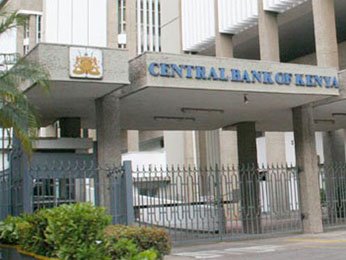NAIROBI, (Xinhua) — Kenya’s central bank (CBK) said on Monday the introduction of capital buffers in 2013 has helped promote financial stability in the banking sector by cushioning banks in tough times.
In 2013, the CBK raised capital requirements for commercial banks in a bid to cushion the lenders from potential turmoil in the local and global financial system. These new guidelines became effect on Jan. 1.
 In the new guidelines, the CBK gave the banks 18 months to raise their capital buffers by up to 2.5 percent of their deposits to improve their stability in times of losses and economic stress.
In the new guidelines, the CBK gave the banks 18 months to raise their capital buffers by up to 2.5 percent of their deposits to improve their stability in times of losses and economic stress.
“This brought the core and total capital ratios to 10.5 percent and 14.5 percent respectively, which every bank must maintain at all times,” CBK said in a statement received on Monday.
A capital buffer refers to additional capital above the minimum regulatory capital ratios set by regulators. Capital buffers are meant to cushion banks against any form of shocks affecting their operations and earnings.
They enable banks to continue lending even in difficult times since the buffers are used to absorb any resultant losses without necessarily breaching the minimum regulatory capital ratios.
The country’s apex bank said the East African nation’s banks have been building these buffers over the last 24 months.
According to CBK, these buffers have enabled the banks to absorb additional loan loss provisions required for the slight increase in non-performing loans registered in 2014.
“For those with no increases in Non-Performing Loans (NPLs), the buffers have enhanced their resilience.The capital buffers have therefore contributed to the stability of the Kenyan banking sector,” it said.
“In view of the current levels of NPLs, the enhanced capitalization will not only provide additional cushion but will also boost the capacity of Kenya banking sector to grow in the future, thus giving the banking sector a strong rating.”
Kenya’s banking sector has expanded rapidly in the past decade pushing some of the banks to operate within thin capital margins while others have started regional operations exposing themselves to country risks.
The CBK maintains that the buffer should be made up of high quality capital, which should comprise mainly of common equity, premium reserves and retained earnings.
Central banks have been pushing for more capital requirements and stringent financial reporting standards following the 2008 global financial crisis to bolster stability of the sector.
CBK said one of the key lessons from the 2007-2009 global financial crises was that there was a need for bank regulators to ensure that banks are appropriately and adequately capitalized in order to withstand shocks from adverse developments.
Among the post crisis capital management reforms introduced by the Global Standard Setting Bodies, Basel Committee for Banking Supervision and Financial Stability Board, were the introduction of capital buffers.
“Fortunately for us in Kenya, banks have been well capitalized and have adhered to changes in the requirements by the CBK,” the statement said.
Based on the Basel pronouncements on capital buffers, the CBK introduced in 2013 a capital conservation buffer of 2.5 percent above the minimum regulatory core and total capital ratios of 8 percent and 12 percent respectively, which became effective in January.
Source: Xinhua


Leave a Reply